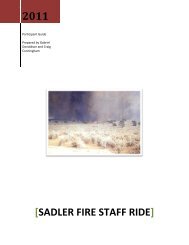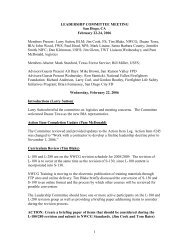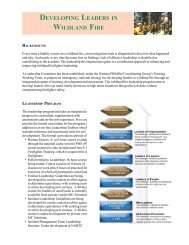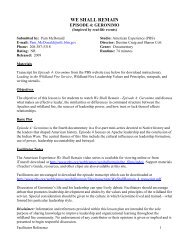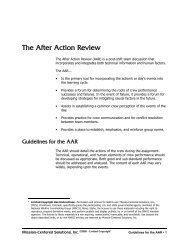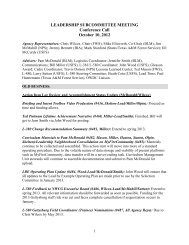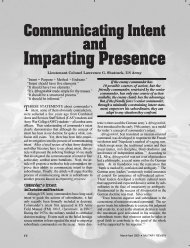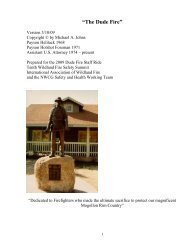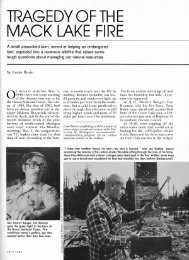example tdgs/stex #2 - Wildland Fire Leadership Development
example tdgs/stex #2 - Wildland Fire Leadership Development
example tdgs/stex #2 - Wildland Fire Leadership Development
Create successful ePaper yourself
Turn your PDF publications into a flip-book with our unique Google optimized e-Paper software.
how he/she communicated that decision. Discussion in the AAR should focus on why<br />
the player chose a particular option. Once the “why” has been confirmed the<br />
discussion can move to the “how” of communicating the developing the situation.<br />
During the AAR items for discussion may also include:<br />
• Establishing yourself as the IC and appropriate notifications<br />
• Establishing unified command and the appropriate notifications<br />
• What is meant by “Bias for action”<br />
Whatever the decided course of action, ask other participants if their priority would<br />
have been suppressing the fire or managing the incident and why. This may be a good<br />
time to discuss local unit relationships with cooperators, non-agency personnel, nonagency<br />
personal protective equipment use, or other local issues.<br />
------------------------------------------------------------------------------------------------------------<br />
After Action Review:<br />
Conduct an AAR with focus on the training objective. Use the AAR format found in<br />
the IRPG to facilitate the AAR. There are four basic questions in the AAR.<br />
1. What was planned<br />
2. What actually happened<br />
3. Why did it happen<br />
4. What can we do next time<br />
TDGS shouldn’t have a single solution and keep the focus of the AAR on what was<br />
done and why.<br />
33



